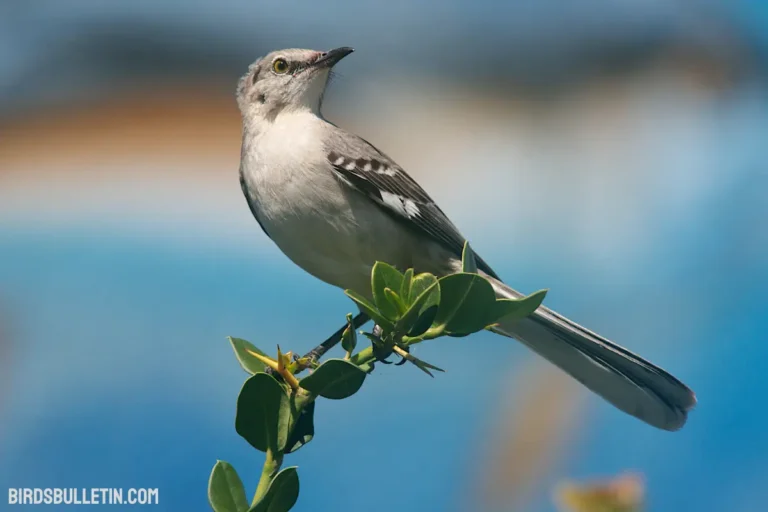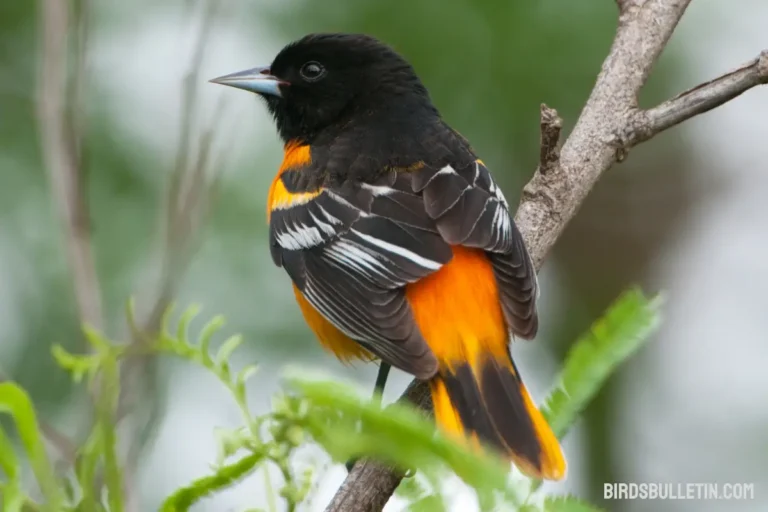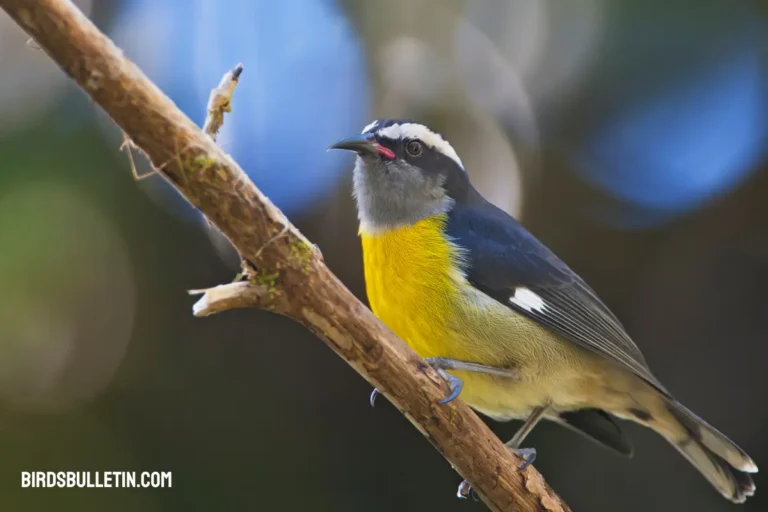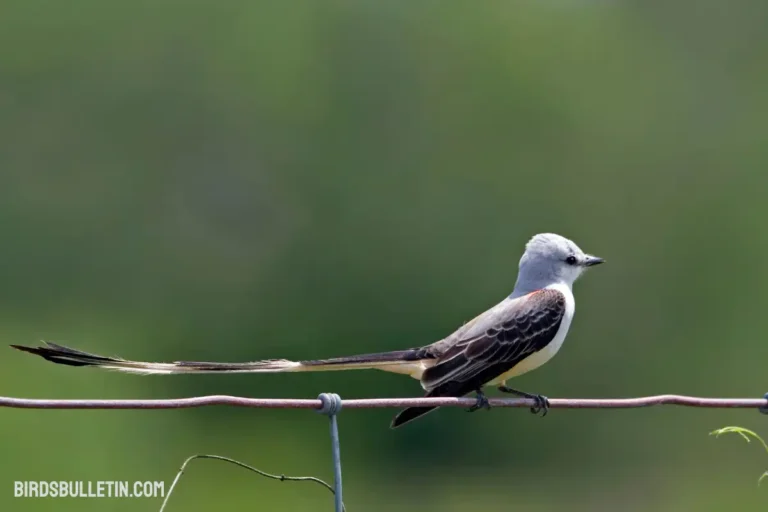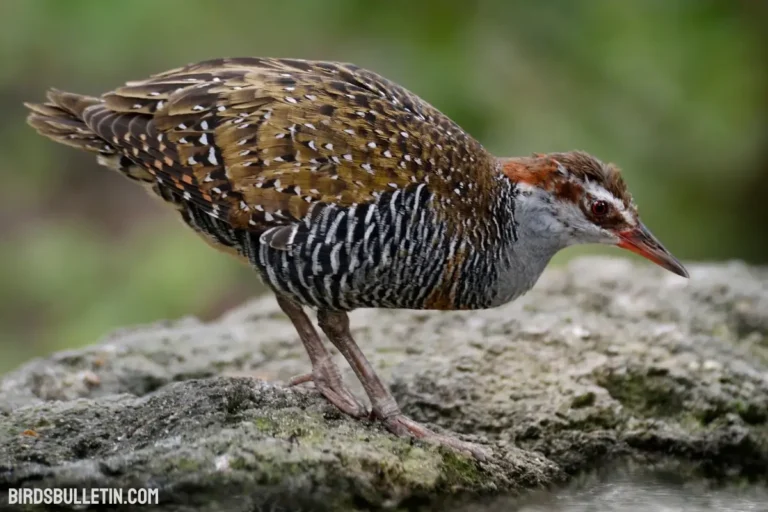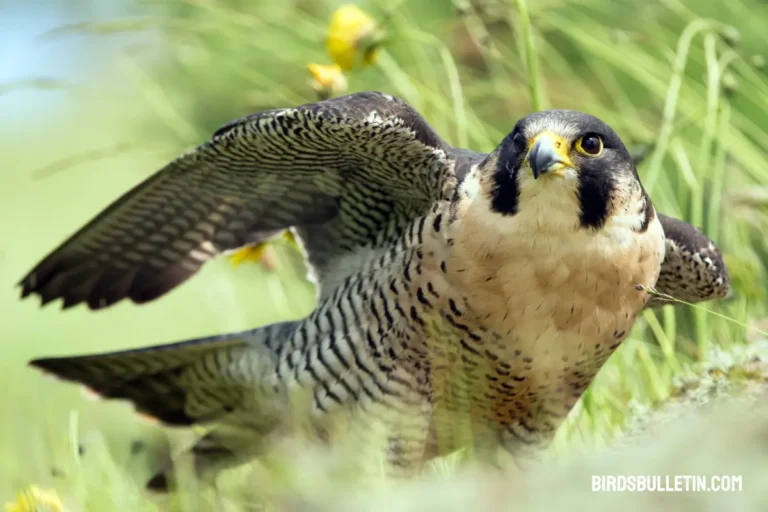Lark Bunting (Calamospiza Melanocorys)
The lark bunting is a medium-sized songbird, around 6 to 7 inches in length. Males have black feathers during the breeding season, with white wing patches that are visible during flight.
Outside of the breeding season, males take on a streaked brown coloration. Females have brown and white plumage year-round.
Both sexes have conical bills and notched tails. Lark buntings are similar in appearance to sparrows, but can be identified by their flight pattern – they have rapid wing beats and often fly in a zig-zag pattern. Their call is a distinctive flight song of buzzes and trills.
Interested in similar topics on birds overview:
Lark Bunting Profile
| Feature | Description |
|---|---|
| Scientific Name | Calamospiza melanocorys |
| Alternative Names | White-winged blackbird and white-winged bunting |
| Colors | Males: black with white wing patches in summer, brown-streaked in winter Females: brown and white year-round |
| Lifespan | Estimated 5 years |
| Wingspan | 9.5-11 inches |
| Weight | 1.3-1.5 oz |
| Size | 6-7 inches long |
| Diet | Seeds, grass grains, insects |
| Breeding Season | May to June |
| Locations | Breeds – Great Plains grasslands Winters – Southwest U.S. and Mexico |
| Threats | Habitat loss, agricultural intensification, pesticide use |
Scientific Classification
The scientific name of the lark bunting is Calamospiza melanocorys. It belongs to the family Passerellidae, which are medium-sized New World sparrows. Its genus Calamospiza contains only one other species, the grasshopper sparrow.

The genus name Calamospiza refers to the bunting’s habitat in grassy areas. The species name melanocorys is derived from the Greek words melanos (“black”) and korys (“helmet”), referring to the male’s black head during breeding season.
Subspecies
The lark bunting is monotypic, meaning no distinct subspecies have been described for the species. It is the sole member of its genus Calamospiza.
Population and Range
Lark buntings live in the prairies and grasslands of central North America. Their breeding range extends from southern Alberta to Nebraska, and as far west as California and Nevada. They migrate in the winter down to Texas, Arizona, and Mexico.
Lark buntings have experienced steep population declines in recent decades. Partners in Flight estimates a global breeding population of 27 million, with 79% living in the United States.
However, their numbers have decreased by over 40% since the 1960s, earning them a Vulnerable listing on the IUCN Red List. Habitat loss is the most significant threat.
Migration
The lark bunting is one of the farthest traveling migratory songbirds in North America. They breed during summer in the prairies and grasslands of the Great Plains, then migrate over 1600 miles to their wintering grounds in the southwestern U.S. and Mexico.
Their migration route forms a giant loop each year. In the fall, they form large flocks up to 500,000 strong to travel south. They fly to high altitudes during the day, then descend at dusk to roost.
In spring, males start the return trip north first to establish breeding territories. Females follow a few weeks later. Their migration coincides with blooming wildflowers that provide food.
Behavior
During the breeding season, male lark buntings are territorial and defend their nesting sites with flight displays and songs. Males often cluster their nesting territories together in loose colonies.
Females construct grass-lined nests on the ground, hidden by vegetation. They usually lay 3-5 eggs. Lark buntings are social and congregate in large flocks outside of breeding season.
Hundreds roost together at night before migrating in the morning. They forage for seeds and insects in grasslands and open habitats in large, dense flocks that swirl across the landscape.
Interactions with Humans
Lark buntings were once an iconic species of the Great Plains, with flocks darkening the prairie skies during migration. Pioneers collected their eggs as a food source. More recently, habitat loss from agricultural development has caused steep declines in lark bunting numbers.
They are considered a common host for the endangered parasitic brown-headed cowbird. Conservation programs that protect native grasslands help provide nesting habitat.
Lark buntings are the state bird of Colorado. Their spectacular mass migrations and unique flight displays still make them a sought-after sight for birders on the prairies. They do well nesting in planted cover crops on farmland.
Conservation Status
The lark bunting is listed as Vulnerable on the IUCN Red List. While still common in some areas, overall, their population has declined by over 40% since the 1960s. Habitat loss and degradation are the main threats.
Conversion of prairies to cropland destroys native grasslands used for breeding. Loss of winter habitat is also an issue. Climate change poses a potential future threat.
Conservation efforts focus on preserving intact prairie habitat through easements and land acquisition. Managing grasslands with rotational grazing, prescribed burns, and native plant restoration provides quality habitat.
Reducing pesticide use also helps protect insect food sources. Monitoring migration pathways helps identify important stopover sites to conserve along their route.
Here are Some Cool Facts About this Bird
- Mass Migrations – Lark buntings undertake one of the longest migrations of any North American songbird, traveling over 1,600 miles in a giant loop each spring and fall.
- Huge Flocks – Outside of the breeding season, they gather in enormous flocks numbering in the hundreds of thousands of birds. Their swirling migratory flocks would darken prairie skies.
- Dramatic Colors – Males have stunning black and white plumage during breeding season. Their colors change to a streaky brown outside of mating season.
- Zigzag Flight – Lark buntings have a distinctive erratic flight pattern. They flap their wings in quick bursts and zigzag low over the grasslands.
- Grassland Specialists – They are specially adapted to nesting and feeding in open prairie habitats. Nests are woven into the grasses and hidden on the ground.
Frequently Asked Questions
01. What does the lark bunting eat?
Lark buntings are primarily granivores and eat seeds of grasses, crops, and forbs. They supplement their diet with insects like grasshoppers, beetles, and crickets. They forage for food mostly on the ground in open grassy areas.
02. Why is the lark bunting declining?
Habitat loss is the main reason lark bunting populations have declined over the past few decades. Converting native prairie to cropland destroys their breeding habitat. Agricultural intensification also reduces the diversity and insect populations they rely on for food.
03. How can I attract lark buntings to my yard?
You can provide habitat for lark buntings by landscaping your yard with native grasses and wildflowers. Avoid pesticide use so insects are available as food. Open grassy areas away from trees offer the nesting sites they prefer.
References:
- Cornell Lab of Ornithology. “Lark Bunting.” https://www.allaboutbirds.org/guide/Lark_Bunting/
- National Audubon Society. “Lark Bunting.” https://www.audubon.org/field-guide/bird/lark-bunting
- IUCN Red List. “Lark Bunting.” https://www.iucnredlist.org/species/22721049/189197819


